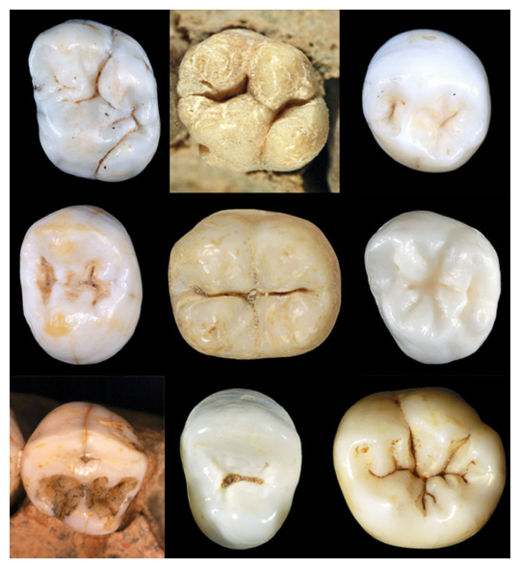
© Aida Gómez-RoblesThis image shows diversity in premolar and molar morphology in Neanderthals, modern humans and potential ancestral species.
Bloomington, Indiana -- The search for a common ancestor linking modern humans with the Neanderthals who lived in Europe thousands of years ago has been a compelling subject for research. But a new study suggests the quest isn't nearly complete.
The researchers, using quantitative methods focused on the shape of dental fossils, find that none of the usual suspects fits the expected profile of an ancestor of Neanderthals and modern humans.
They also present evidence that the lines that led to Neanderthals and modern humans diverged nearly 1 million years ago, much earlier than studies based on molecular evidence have suggested.
The study, which will be published online this week by the Proceedings of the National Academy of Sciences, was carried out by an international team of scholars from The George Washington University, Konrad Lorenz Institute for Evolution and Cognition Research in Austria, Indiana University and Atapuerca Research Team in Spain.
"Our results call attention to the strong discrepancies between molecular and paleontological estimates of the divergence time between Neanderthals and modern humans," said Aida Gómez-Robles, lead author of the paper and a postdoctoral scientist at the Center for the Advanced Study of Hominid Paleobiology of The George Washington University.
"These discrepancies cannot be simply ignored, but they have to be somehow reconciled."

